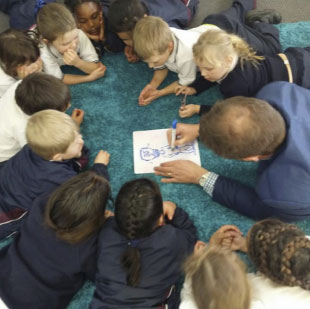Download a printable copy of this article (PDF 279KB)

- Scaffold the teaching of time management and social skills through fun.
- Build the skills and capabilities of engagement and socialisation.
- Teach social skills explicitly.
- Teach students about deadlines – life is full of them.
- Teach that lifting effort for short periods is possible.
- Make competition them against us rather than between student groups.
I have the wonderful privilege of speaking with teachers around Australia about both the immense rewards and the challenges of being a contemporary educator. While there’s a little bit of Pollyanna in all of us, the truth is we speak a lot about the challenges. There are an enormous number of accountabilities in being a modern teacher and with the plethora of compliances that come with the profession, there never seem to be quite enough hours in the day.
“Without deadlines and restrictions I just tend to become preoccupied with other things.”
– Val Kilmer
Time is an interesting and somewhat ethereal concept that seems to be impeding genuine progress far more than enabling it these days. As teachers, we don’t feel that we have enough of it to achieve the objectives in our programs or to tick off the tasks in our diaries. Parents and carers may often seem too busy taking their children to sport, dancing and music lessons or allowing screen time to spend quality time with them. When we think about our students, many of our complaints are about time too. They might be perennially late to class, wasting time on meaningless online gaming pursuits, failing to use time wisely and also not getting important learning tasks completed by deadlines.
Perhaps it is the looseness we’ve applied to deadlines in recent years that has most contributed to students’ disregard for time as a valuable resource or commodity.
Many teachers I speak to bemoan the inability of their students to adjust their energy levels at all to meet a deadline. Students see working as a static condition where effort merely needs to be applied but they do not consider how much effort is required at various stages of the task. This needs to change. While remedial measures can be made with older students who have still not learned to meet a deadline, it’s in our younger classes that the foundational work can be done.
Being on task is not enough. Students need to learn the quite specific behaviours of rapid task initiation, the capacity to sustain attention through difficulty and then to increase energy for short periods of time to meet a deadline – even if that deadline seems to be arbitrary or unfair.
When it comes to the skills and capabilities of engagement and socialisation I use a simple three step process:
- Teach it explicitly.
Don’t hope that on task, creativity, conflict resolution or respect can be taught while you teach fractions. After all, you wouldn’t teach author’s intent while you taught ordinal number. If it’s important, give it the explicit time allocation it deserves. - Apply it to something easy.
Allow students to see the behaviour in a video or a story, allow them to play a game requiring the capability or to mantra the key principles so that they commit some of the thinking to short and long term memory. - Apply it to the learning program or to their lives.
Use the established language patterns to reinforce the behaviour in academic programs and in the way that they socialise.
Consider a method for teaching on task behaviours with these intentions in mind to an early childhood class or perhaps an older group who have not been taught this earlier in their school experience. Establish a three challenge game – it’s them against you. Only 100% achievement by each group member allows them to win the challenge.
- Teach students to Get On The Job. Emphasise that this is a short challenge and that they have only one minute to do all they need to do to commence work. In this instance, perhaps it could be free drawing – and the students need to cooperate to get the paper, to get the pencils and to have commenced drawing. Mantra Get On The Job with them in silly voices while they set up.
- Teach students to Stay On The Job using more silly voices. This approximately 20 minute challenge is about continuing to draw despite various random complications – like drawing with your opposite hand, in green only, including famous people, swapping pictures, swapping seats, debating issues, etc. If a student fails to continue drawing at any stage the group collectively loses.
- Teach students to Finish The Job. This is a 2 minute task, where students must up their intensity and effort briefly. They MUST finish their picture. There will be none of this “Well I was working” or “I was trying … honestly”. Life is full of deadlines and sometimes you have to work extra hard to meet them. If there’s a picture I rule to be incomplete, then I win.
This last challenge is critical. We should not allow students to float along learning to use their energy at only a mediocre level.
Time management …. It’s about TIME that we got a handle on it.








